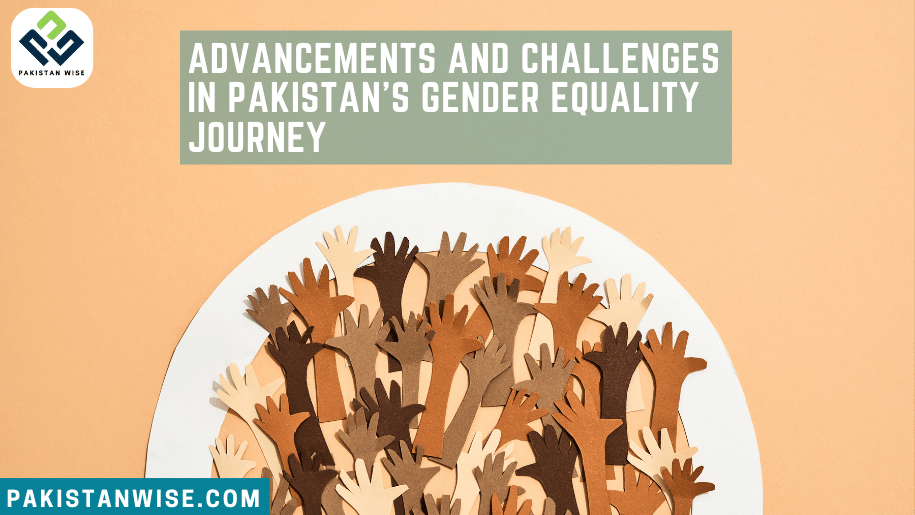Introduction:
Pakistan has made significant progress in its efforts towards gender equality, as evident from its improved position in the Global Gender Gap report. Economic participation and opportunities, along with advancements in education and healthcare, have contributed to this positive shift. However, despite these advancements, challenges in implementing and enforcing gender equality laws persist. This article will explore the achievements made by Pakistan, highlight the hurdles in effective implementation, and shed light on the representation of women in key sectors.
Improved Gender Equality Indicators:
According to the Global Gender Gap report, Pakistan has advanced its position by approximately three points. Notably, the economic participation and opportunity sub-index has played a crucial role in this progress. Achieving wage equality for similar work has been a significant milestone, made possible through growing awareness and efforts to raise consciousness on gender-related issues. Secondary and tertiary education, healthcare accessibility, and initiatives promoting women’s labor force participation have also contributed to this positive trend. Moreover, various civil society organizations and NGOs have played an instrumental role in fostering gender sensitization.
Legal Measures and Industry-Level Efforts:
While Pakistan lacks an Equal Pay Act at the national level, several companies have taken the initiative to implement policies that ensure wage parity for similar work. Furthermore, the Ministry of Human Rights introduced a noteworthy policy concerning business and human rights, along with a comprehensive national action plan. These measures have pushed the government to prioritize gender equality. However, there remains room for improvement in terms of implementing legal frameworks effectively.
Challenges in Implementation Gender Egalitarianism:
Pakistan’s reputation as an over-legislated country often overshadows the underlying challenge of poorly drafted laws. For instance, the recent daycare act lacks clarity regarding the entities responsible for issuing warnings and lacks a comprehensive framework for enforcement. In addition, cultural norms in Pakistan suggest that legislation alone is insufficient to ensure effective implementation. Supplementary rules and regulations are necessary to operationalize laws, but they are often neglected. Moreover, political instability and institutional breakdowns pose significant obstacles to implementation. Without the necessary laws, regulations, political will, and institutional support, realizing gender equality becomes an arduous task.
Resource Constraints:
Implementing gender equality provisions requires substantial resources, and Pakistan faces economic difficulties that hinder progress in this regard. While the country makes commitments at the international level, resource limitations often impede the fulfillment of these promises. Consequently, achieving optimal representation and equal opportunities for women in various sectors becomes a significant challenge.
Representation in the Justice Sector:
The representation of women in the justice sector remains low in Pakistan. A baseline study conducted in 2020 revealed that only 15% of judges in the country are women, primarily serving in subordinate courts. However, the percentage drops significantly when considering higher judicial positions, with barely 1% of women represented in the superior judiciary. Similarly, female advocates make up only 12 out of the total number, with a mere 4% advocating at the Supreme Court. This gender imbalance extends to prosecutors and bar councils, where women hold minimal positions. Furthermore, women’s representation in the police force stands at a meager 4%.
Insufficient Representation in Law Firms and Educational Institutions:
Gender disparity is also noticeable in law firms, with a negligible representation of women in senior leadership roles. Unfortunately, data regarding female students in law schools is unavailable, making it challenging to assess the situation accurately.
Conclusion:
Pakistan’s progress in improving gender equality, as evidenced by its enhanced position in the Global Gender Gap report, is commendable. Efforts to address wage disparity, enhance education and healthcare accessibility, and promote women’s participation in the workforce have yielded positive outcomes. However, challenges in implementing gender equality laws persist. Poorly drafted legislation, the need for supplementary rules, political instability, institutional breakdowns, and resource constraints hinder effective implementation. Additionally, the representation of women in the justice sector and other key fields remains inadequate. To ensure lasting change, Pakistan must address these challenges and work towards comprehensive gender equality through effective implementation and support at all levels of society.

